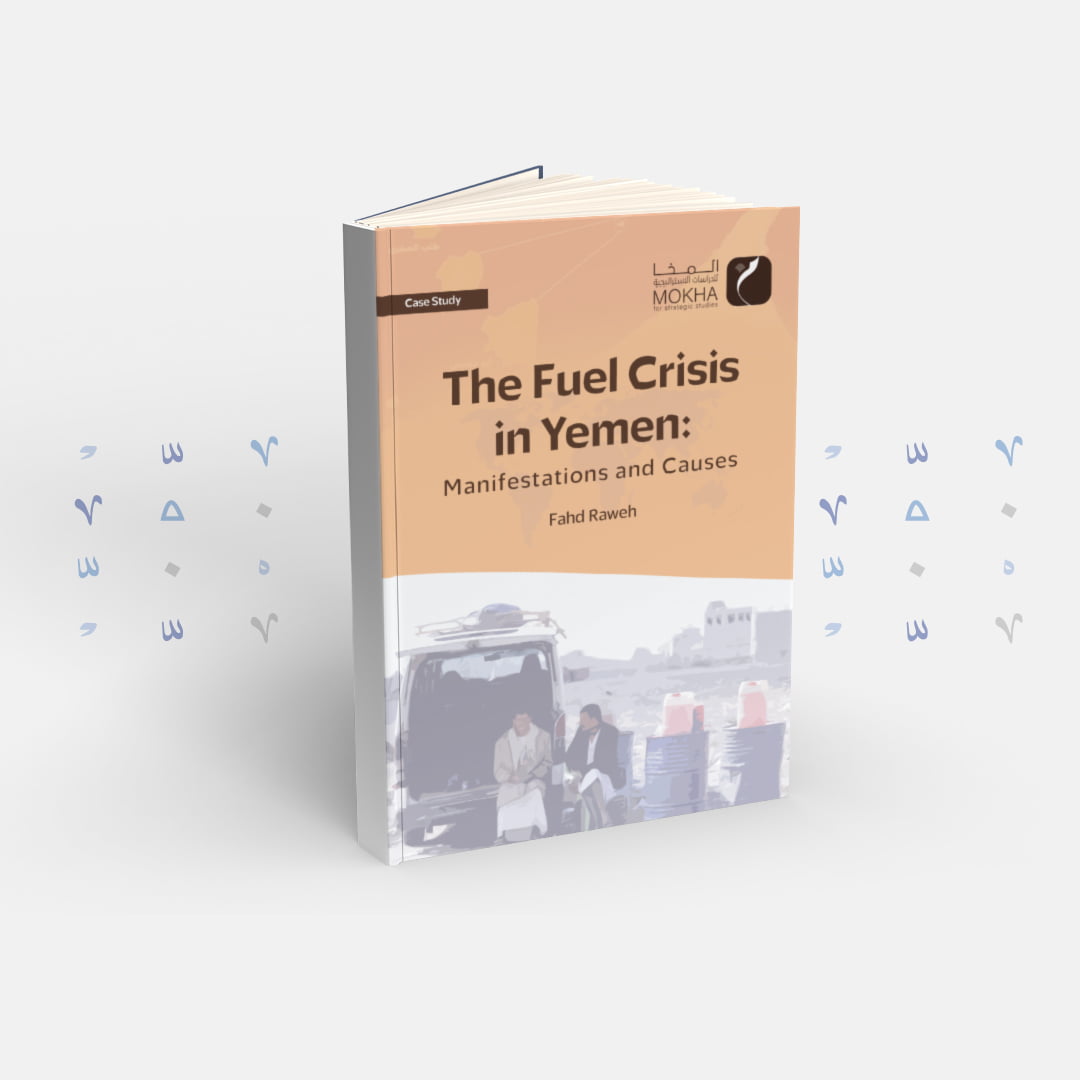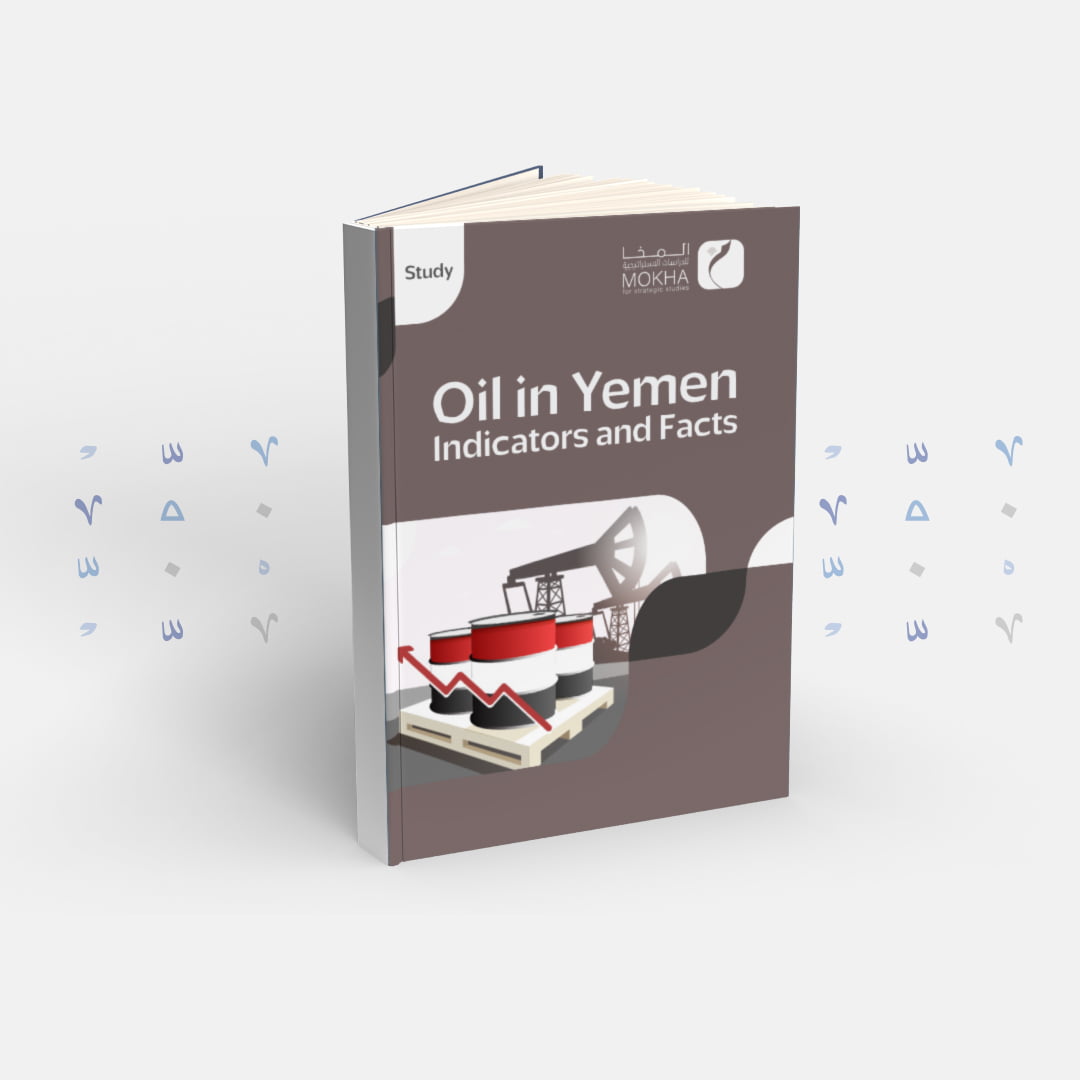The Formation of the Nation Shield Forces

| Getting your Trinity Audio player ready... |
On January 29, 2023, the chairman of the Presidential Leadership Council, Dr.
Rashad Al-Alimi, issued a decree to establish military units called the Nation
Shield Forces, which will be the reserve of the Supreme Commander of the Armed
Forces. In the second article of the decree, it was stated that the Supreme
Commander of the Armed Forces will determine the number of these forces, their
tasks and their theater of operations. In addition, it was stated that these forces
be bound by the law of service in the armed forces and the directives of the
supreme commander of the Armed Forces. Moreover, a decree was issued by the
chairman of PLC to appoint Brigadier General Bashir Saif, Commander Ghubir Al-
Subaihi, as commander of the Nation Shield Forces.
During the same period, there was frequent news about the arrival of military
equipment for these forces in Aden and the continuation of the recruitment
process for new brigades affiliated with them in several southern governorates.
The formation of these forces raised many questions about the reasons and the
necessity of their formation, the objectives behind them and their repercussions
on the political and security scene in Yemen during the coming period, which this
report seeks to answer.
Context:
To support the legitimacy in Yemen, the two countries of the Arab Coalition
sponsored the formation of several armed groups. The United Arab Emirates,
which is considered the second party in the coalition, has supported military
formations, such as the security belts force, and elite forces in Aden and the
southern governorates, as well as during a certain period in Taiz, based on its
geopolitical interests, its adversarial positions against the legitimate government
and other major parties related to it. The UAE refused to integrate these
formations into the framework of the national army, and those military
formations were able to impose their control over Aden, after two rounds of
confrontation with the forces of the legitimate authority. The first took place in
late January 2018, and the second took place in August 2019, where the
Presidential Protection Brigades and the Nation Shield Forces were forced to
withdraw to the Shuqra area in Abyan, which has become a frontline between the
legitimate forces and the military formations of the Transitional Council.
Moreover, Saudi Arabia sponsored dialogue between the legitimate authority and
the transitional council, which resulted in the Riyadh Agreement, which was
signed on November 5, 2019, and resulted in the return of the Presidential
Protection Brigades to Aden and the withdrawal of the military formations
affiliated with the STC outside the city and their integration within the framework
of the ministries of defense and interior, in exchange for the integration of the
transitional council into the legitimate authority. While the political part of the
agreement was implemented, the STC hindered the implementation of the
military and security part.
The tensions regarding the status of the military formations moved to a new
phase after the formation of the PLC, on April 7, 2022. The philosophy of forming
the Leadership Council was to include the various military formations within its
framework. The PLC council consisted of eight people, each of whom leads (or is
related to) a military formation, and the head of the council, Dr. Rashad Al-Alimi,
was the only exception. The announcement of the transfer of power stipulated
the formation of a military and security committee “to achieve security and
stability, by adopting policies that work to … create the conditions and take the
necessary steps to achieve the integration of forces under a unified national
command structure, within the framework of the law, and to end division in the
armed forces”.
On May 30, 2022, the PLC agreed to form this committee of 61 members, headed
by Major General Haitham Qassem Taher, to integrate the military formations. It
also agrees to form a committee to evaluate and restructure the intelligence
agencies. This committee launched its meeting in Aden, on June 25, 2022, but the
effects of its efforts have not yet been felt. Instead, the consensus that was
present during the first months of the formation of the PLC faded after the
military battles that took place in Shabwa and Abyan, due to the transitional
council imposing its military control over the rest of the southern governorates,
including Hadhramaut, which the STC continued to threaten to invade it in the
previous period, which means that it approached (backed by Emirates) Saudi
borders and its vital security areas, which was rejected by the Riyadh Agreement.
The nature and strength of the Nation Shield Forces:
The decree to establish the Nation Shield Forces stipulated that these forces
would be the reserve of the Supreme Commander of the Armed Forces, who
would determine their number, tasks and theater of operations, in an operational
order issued by him, which means that these forces would be in a state of direct
subordination to the president of the command council, and replaces the
Presidential Protection Brigades, which were present during the period of the
former president, with flexibility in defining its range of operations, by not linking
it to a specific military area and allowing it to be used in multiple tasks in the
range of operations that falls under the armed forces affiliated with legitimacy.
The formation of these forces dates back to earlier periods during the formation
of the Giants Forces, as they were announced in mid-2022. At that time, they
were called the Happy Yemen Forces; then, the name was changed to the New
Giants Forces, but other military parties objected to this name, so it was changed
again to the Nation Shield Forces. According to informed sources, the strength of
these forces reaches 15,000 soldiers, distributed at the current stage into seven
brigades, deployed in several southern governorates, as follows:
| Brigade | Location | Commander | |
| 1 | 1st Brigade | Lahj | Majdi Mohandel Al-Subaihi |
| 2 | 2nd Brigade | Abyan | Tawfiq Abboud Al-Mashouli |
| 3 | 3rd Brigade | Abyan/Al-Bayda | Abed Rabbo Nasser Al-Raqabi |
| 4 | 4th Brigade | Lahj | Abdul Khaliq Ali Al-Kalouli |
| 5 | 5th Brigade | Hadramout | Fahd Salem Issa Bammomen |
| 6 | 6th Brigade | Abyan / Aden | Muhammad Abu Bakr Al-Kazemi |
| 7 | 7th Brigade | Dale | Ali Shutari |
Currently, recruitments are taking place in several governorates to form seven
brigades in the second phase and the same number in the third phase. According
to an informed source, Saudi Arabia has promised to provide a large level of
support to these forces, turning them into a strike force. However, the fulfillment
of these promises remains questionable, just as the Saudi method of establishing
military formations is often concerned with the density of human strength and
not with training, arming and discipline, in contrast to the formations supervised
by the Emirates, which obtain a high level of training, qualification, armament and
high discipline.
The command of these forces was entrusted to Brigadier General Bashir al-
Subaihi, a Salafist figure who received his religious education at the Dammaj
Institute, which was founded in the early ’80s in Saada, by Muqbil bin Hadi al-
Wadi’i, one of the symbols of the Salafist movement.
Al-Subaihi participated against the Houthi militia in the city of Aden and had a role
in expelling them from the Al-Anad base in 2016. According to reliable sources,
the leaders of these forces, including brigade commanders, and a large number of
individuals and soldiers, belong to the Madkhali Salafist movement, which is
known for its loyalty to Saudi Arabia. This movement is in a major quarrel with the
Salafist movement affiliated with the representative of the transitional council,
Hani ben Brik, who was recently removed from the scene. The same applies to the
Madkhali Salafist movement affiliated with a member of the PLC, Abu Zara’a al-
Mahrami. The rivalry of this faction extends from the pro-Saudi Madkhali Salafist
movement to the UAE, as well.
Motives:
Ambiguity surrounds the motives that compelled Saudi Arabia to form the Nation
Shield Forces. Nevertheless, analyzing the context, the nature of the clashes
taking place in the southern and eastern governorates and the developments in
Saudi Arabia's relations with the Houthi group helps a lot in determining the goals
behind the formation of these forces, including:
1) Undermining the influence of the Transitional Council:
Saudi Arabia has become more convinced of the need to limit the power of the
STC, as it has caused great embarrassment due to its obstruction of the
implementation of the Riyadh Agreement, which was sponsored by Riyadh and
was the guarantor of its implementation. In addition, the STC has recently
paralyzed the movement of the PLC, forced its members to leave the city of Aden,
continued to obstruct the work of the military and security committee for the
integration of military and security components, sparked battles in Shabwa and
Abyan and caused tension in both Hadhramaut and Al-Mahra — and sought
military control over them, as this represents a direct threat to the security of
Saudi Arabia — and tampered with its direct vital field.
The Transitional Council has become a challenge to Saudi policy in the southern
and eastern governorates, which requires curbing its power. The formation of the
Nation Shield Forces came in the context of several policies adopted by Riyadh to
weaken the Transitional Council and undermine its influence, including:
a. The head of the Transitional Council, Aidarous al-Zubaidi, was prevented from
returning to Aden.
b. The unification of the authority for paying the salaries of military formations by
the two coalition countries, so Saudi Arabia alone takes over the payment of the
salaries of the army and military formations. In this regard, the security belts and
backup forces affiliated with the Transitional Council suffer from delayed salaries
and irregularity, like the rest of the national army units, which have affected the
morale of its members, and some of them may be forced to transfer to the Giants
or the Nation Shield Forces.
c. Instructing some Saudi media professionals to clash with the supporters of the
Transitional Council and attack it.
For all of this, the Transitional Council was the party most apprehensive about the
formation of these forces. The voices of activists affiliated with the Council were
the most objected to the formation of these forces to the extent that they
attacked the Saudi Crown Prince.
2) Strengthening Saudi influence in the face of the UAE:
Saudi Arabia seeks to strengthen its influence in southern Yemen, as it competes
with the UAE, as the latter was able to impose its presence in Aden, the Yemeni
coasts and islands, and international maritime navigation lines in the Bab al-
Mandab Strait, and it now aspires to approach Saudi borders by pushing its allies
to control Hadhramaut, after it did the same thing in Shabwa and Abyan, which
represented a threat to the security of Saudi Arabia, and prompted it to form
these forces, which could be a safe alternative in the first military region, as some
of these forces are likely to replace the camps of this region.
3) Ensuring the presence of the chairman of the PLC in Aden:
Although Saudi Arabia supported the formation of these forces before the
transfer of power from President Hadi, it decided to link them to the PLC head,
Dr. Rashad Al-Alimi, as the Supreme Commander of the Armed Forces, to enable
him to have a strike force that would provide him with protection in Aden. This
path will likely proceed in parallel with other measures that weaken the
Transitional Council militarily and politically, which limits its dominance over the
Presidential Leadership Council.
4) Precaution for a political settlement or war with the Houthis:
There are frequent indications of an imminent political settlement between Saudi
Arabia and the Houthi group, which may lead to an end to the war that has been
going on for more than eight years. In this case, Saudi Arabia is working to secure
the vital areas in southern Yemen against any intrusions by the Houthi group,
given its lack of confidence in the military components of the transitional council,
which the Houthi group can penetrate. Saudi Arabia hedged for this; according to
close sources, the Nation Shield Forces were formed and deliberately chose their
locations to form a belt that is located in strategic areas, represented by Ras Al-
Ara, in the Sabiha area, and the Al-Anad base, which represents a very important
strategic area for the city of Aden.
Also, the formation of these forces represents a precautionary step for the
possibility of the failure of the peace efforts with the Houthi group, as this strike
force can change the military balance with the Houthi forces. Therefore, the
announced discourse of these forces often emphasizes that the goal for which
they came is "to defend religion, Arabism, and the homeland from the plans of
the Persians (Iran and its followers)”, referring to the Houthis.
Repercussions
The possible repercussions of the formation of these forces depend on several
tracks, including the development of the situation in the southern governorates,
and the relations between Saudi Arabia and the PLC, whether jointly or
separately, on the one hand, and the Houthis on the other. However, there are
several likely repercussions as follows:
1- Weakening the Transitional Council:
Where it is likely that Saudi Arabia will intentionally — through its soft or
coarse tools — gradually undermine the influence of the transitional council, it
is expected that the Nation Shield Forces will replace the formations affiliated
with the Transitional Council in several vital locations in some areas of Aden
and elsewhere and that the moral strength of the members of those
formations affiliated with the Transitional Council will be relatively diminished
by controlling their salaries and the financial support provided to them and
that the striking military force in the southern governorates is ultimately
confined to each of the Giants forces and the Nation Shield Forces.
The presence of these forces, and their deployment in several vital areas in
Aden, would weaken the political influence of Aidarous al-Zubaidi and the PLC
on behalf of the head of the leadership council, Al-Alimi. This was evident in
the decision to establish these forces, as they were directly linked to the
chairman of the Leadership Council and not to the Leadership Council, as Al-
Alimi is the expression of Saudi policy at this stage, at least.
2- Adding more complexity to the Yemeni scene:
There is no doubt that the formation of a new military faction represents an
addition to the complexity of the military and political scene in the country, as
another party has been added to the political parties that own and control
weapons, especially since it is semi-closed to one ideological trend and a
specific geographical area. In fact, it — nominally — follows the head of the
leadership council, otherwise, it is linked to a foreign party and receives
directions from it. In addition, several risks may result from the politicization
and employment of the Madkhali Salafist movement. The formation of these
forces, although it has achieved balance in the southern governorates at the
current stage, may create many challenges in the long term, as the limitation
with which this movement deals may contribute to creating many challenges
in the future.
3- The militarization of the southern governorates:
The ongoing war resulted in widespread militarization in the southern
provinces. The UAE has established a wide number of military formations
(security belts, elite forces and backup forces), which, according to an Emirati
official, have reached nearly 200,000, and Saudi Arabia aims to bring the
Nation Shield Forces to more than 20,000, as the majority of these forces are
from the southern governorates so that the supporters of the transitional
council do not have the opportunity to claim that they are northern forces that
came to impose their control over Aden and the south.
It is of note that the operations of this army were based in the Sabiha area of
Yafaa, which is considered a human resource for most military formations,
especially those of the Salafist orientation.
4- The establishment of new conflicts:
The militarization of the southern governorates, the multiplicity of military
formations and their loyalties and the distribution of weapons among several
parties all provide ideal conditions for the possibility of new rounds of war
erupting in those governorates.
The Nation Shield Forces share some aspects with the military formations of
the Transitional Council, including their affiliation with the southern
governorates, and the heavy Salafist presence. However, the possibility of
escalation, mutual mobilization and perhaps confrontations remains possible,
especially in the event of marginalizing the brigades of the transitional council
(security belt forces and the backup forces) and replacing them with the
Nation Shield Forces in vital areas in Aden, which is expected, and in the event
of a serious dispute between Saudi Arabia and UAE and its transition to the
stage of clashing between the allies on the ground.
Conclusion:
The previous proposal indicates that the establishment of the Nation Shield
Forces is a Saudi decision in the first place, even if it was made by the president of
the PLC, as the formation of these forces aims to deal with the challenges facing
the Saudi influence in the southern governorates, confronting the strong Emirati
influence on the ground, including the Transitional Council’s obstruction of the
work of the Presidential Leadership Council and the Yemeni government. In
addition, its reliance on the Madkhali Salafist movement represents a form of
precaution for the paths of relations with the Houthis, and it is expected — if
Saudi Arabia continues to support these forces — that it will bring about a change
in the balance of military and political power in the southern and, possibly,
Yemeni scene.
However, it must be emphasized that continuing to establish military formations
based on a specific ideological or geographical current, without being fully
integrated into the structure of the national army, and not reflecting societal
diversity, puts Yemen — without a doubt — on the path of possible new cycles of
violence.
Resources:
1 – Decision of the Chairman of the Presidential Leadership Council to establish the National Shield Forces, Yemeni News Agency (Saba), affiliated with the legitimate authority, on: 1/29/2023, available at the following link: https://www.sabanew.net/story/ar/94441
2 – Presidential announcement transferring power and forming the Presidential Leadership Council, Yemeni News Agency (Saba), on 4/7/2022, available at the following link: https://www.sabanew.net/story/ar/85336
3 – The Presidential Leadership Council approves the formation of the Security and Military Committee, Yemeni News Agency (Saba), on 5/30/2022, available at the following link: https://www.sabanew.net/story/ar/86717
4 – It participated with 18,000 soldiers and recruited 200,000 Yemenis. The UAE announces the return of its forces and reveals its toll in Yemen, Al Jazeera Net, on 9/2/2020, available at the following link: https://shortest.link/hbQu




